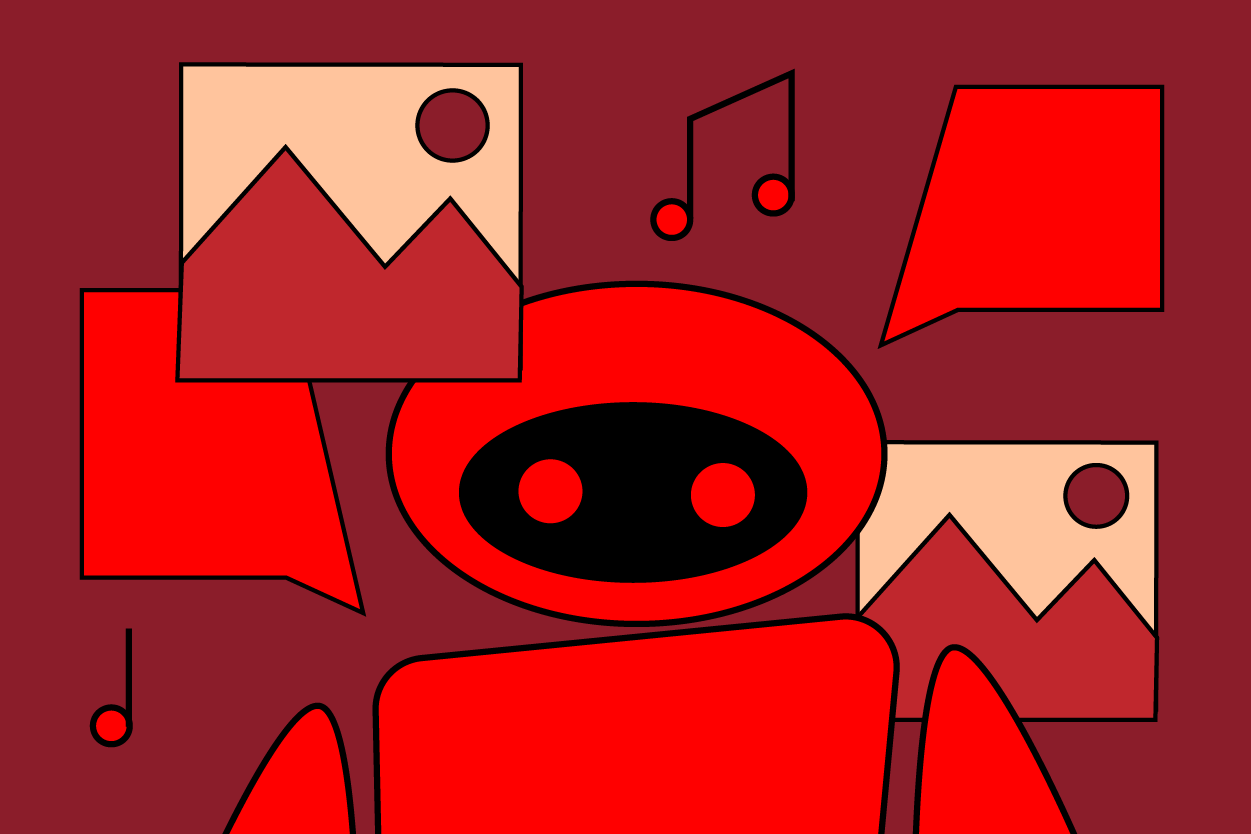Nostalgia is described as a sentimentality for the past, typically for a time or place that elicits happiness or fondness. At some point in our lives, we have all longed for that sense of comfort and warmth that familiarity brings.
Nostalgia doesn’t necessarily have to evoke big or mushy feelings to be felt. Sometimes, a scent or a color can trigger a fleeting memory that invigorates us. Something as simple as the right song played in a commercial may transport us to our 10th birthday at the roller skating rink, flooding us with unexpected emotions that may leave us bawling, maybe with sadness from what it no longer is, or perhaps with joy from what it once was. Such is the nature of this phenomenon — it’s a hankering that makes us feel warm and fuzzy.
The beauty of nostalgia is that it connects people in many different ways. It can intimately tether individuals to their pasts and persuade people to find a communal bond, transcending cultures and generations.
Marketers have long understood how to weave nostalgia into their branding in order to create a positive emotional feeling in their customers. This kind of strategy is called nostalgia marketing, and here, we will explore several of its elements and some examples of its most successful campaigns.
What is Nostalgia Marketing?
Garnering the power of nostalgia to create memorable and impactful marketing campaigns is not new. Nostalgia marketing aims to maximize people's emotional connection with their past to advertise their brand, services, or products to increase consumption — and examples of nostalgia marketing can be traced back to the 1980's.
Well-thought-out campaigns relying on nostalgia are likely to stand the test of time, given that the endearing quality of their material will likely remain so in the future. It can also set the brand apart from competitors.
A successful nostalgia marketing campaign also requires brands to deeply understand their audience, including their generational and cultural differences. Marketing teams can then deploy multiple strategies to achieve authentic and fruitful campaigns, including some of the ones below.
Iconic Symbols and Characters
Utilizing iconic or beloved characters from the past can engender nostalgia in consumers. Classic video game characters such as Mario or Princess Peach and cereal box mascots like Tony the Tiger or Count Chocula can be found in products ranging from movies to beauty and sneakers.
Limited Editions
Given the opportunity, many people will spend a lot of their time and money on collectibles, and limited editions can sometimes create a frenzy. Branding these items with a bygone era motive usually means sure-fire success.
Remakes and Revivals
Consumers love the revival or a reimagining of classic products or services. Applying a modern twist to these can bring attention to a brand from old and new fans.
Retro Design Elements
We've discussed that sometimes it only takes a color, song, or shape to trigger nostalgic feelings. With that in mind, incorporating vintage elements that captivate consumers into a brand’s or product’s design is a no-brainer.
Throwback Ad Campaigns
Choosing to run a campaign heavily inspired by a past era — imitating its tone and style — can be an effective strategy to connect people to a brand or product.
Successful Campaigns
Running a successful nostalgia campaign takes tact and cunning. But things can go amiss if brands overuse this strategy, resulting in diminished returns and a side-eye from consumers who could label their efforts as inauthentic.
To hit the nostalgia marketing jackpot, brands and marketing teams must understand the themes and eras that will resonate with their target audiences. They should also be aware of any nostalgic elements that have the potential to create controversy, given their ties to cultural and societal issues that could be sensitive subjects for specific audiences.
Marketers should also consider that nostalgia can have cross-generational appeal, and a successful campaign will seek to reach both young and old.
Now that we understand how to create memorable campaigns with emotional engagement, let’s look at some of history’s most successful nostalgia campaigns.
- Adidas - Billie Jean King Your Shoes
This 2019 campaign celebrated the 45th anniversary of tennis legend Billie Jean King’s historic winning match against Bobby Riggs with a limited edition line of shoes — her face and initials branded on each pair.
Adidas launched a series of commercials where King could be seen spraying a pile of shoes with blue paint. What elevated this campaign that they set up shop at the U.S. Open, where fans could have their shoes (whatever the brand) painted blue to look like the Adidas’ BJK shoes, with stripes, logo, and all.
According to Adidas, the campaign led to a 20% boost in sales.
- Volkswagen - The Force
Simply iconic. Time magazine calls it “the ad that changed Super Bowl commercials forever.”
Showcasing the 2012 Passat, this Volkswagen campaign utilized humor alongside nostalgia, a formula that worked not just for fans of Star Wars — but anyone who recognizes the brand. Set to John Williams’s “The Imperial March,” a pint-size Darth Vader walks around his house trying to move things with his mind to no avail, until Dad gets home with his Passat, and finally, his dark powers show up — well, sort of.
Volkswagen launched the ad on YouTube a week before the Super Bowl, and it had a whopping 17 million views before kickoff. Not bad at all for this being their first Super Bowl ad in over a decade.
- Uber Eats - Wayne's World Cardi B's Shameless Manipulation
Uber’s clever call to eating local brings back an iconic movie duo — Wayne Campbell and Garth Algar. Recreating the dynamic of their move, Wayne’s World, the pair gets up to their distinctively recognizable shenanigans and antics, which the audience expects from them. What they don’t expect is a cameo from none other than Cardi B.
This is where the ad goes from good to fantastic. Uber’s marketing team did their research and understood that you could appeal to multiple generations at once by mixing nostalgia with modernity.
- Google - Home Alone
Ask me about my favorite Christmas movies, and “Home Alone” will likely make the top of the list. This movie epitomizes nostalgia for an entire generation, and Google knows its relevance hasn’t waned.
Like the movie, the 2018 ad shows Macaulay Culkin reprising his role as Kevin McCallister, waking up home alone and going about his day, fending off would-be robbers — but this time with the help of Google Assistant.
The brilliance of this campaign is that its success was two-fold, not only promoting Google Assistant but also garnering even more interest in the “Home Alone” franchise, with Google searches for the series increasing 1,900% that Christmas, according to CNET reports. And one can only assume that percentage converted into movie viewership.
- Spotify - NeverEnding Story
Nostalgia for the '80s reigns above all others. Consider the massive success of “Stranger Things” and the deluge of other products and productions that continue to take Hollywood and mainstream streaming by storm. From television to music, a nod to that decade often means success.
Spotify’s 2016 campaign is an homage to the film “The NeverEnding Story,” released in 1984. It features the film’s hero, Atreyu (now grown up and bearded), riding on the back of Falkor, his luck dragon, as they listen to the movie’s title track by British artist Limahl.
The ad's slogan: “Stories end. Songs are forever.” It's such a simple yet effective statement. The ad then mentions that Limahl’s banger is still streamed every day. Nostalgia is also powerful within the music industry, it seems.
- Bouygues Telecom - Christmas 2018
In this breathtaking ad campaign, French telecommunication company Bouygues Telecom crafts a touching story following a family through time, capitalizing on our connection to our past and people in our lives who stand the test of time.
The ad focuses on the father-son relationship and the moments and traditions that stay with us forever. Some may find this type of nostalgia overly sentimental, but these kinds of strategies are super effective during Christmas — unless you’re a Scrooge.
- Internet Explorer - Child of the 90s
This 2013 web spot from Microsoft’s now-defunct Internet Explorer is genius. The ad reintroduces itself, saying "Hello, you might not remember us, but we met in the '90s." It then highlights the many beloved objects and brands from the '90s and 2000s — from Tamagotchi to Lisa Frank to yin-yang necklaces and many, many more — to show its audience that much like them, Internet Explorer is evolving too.
The ad connects its audience with the product — both are members of Generation Y. Now, they can both reminisce about what “growing up” in the 90s looked like, finally bringing things full circle with the brand’s closing message: “You grew up. So did we.”
- Motorola Razr - Flip the script
In the early 2000s — before Apple’s iPhone — there was the Motorola Razr. People loved its design and simplicity. Then, in 2019, Motorola brought back the Razr flip phone with new and improved features, including a touchscreen.
The idea behind the ad is just as simple. When one man flips open his phone, the world around him pops open too, from suitcases to doors, even transforming his wardrobe to give him a snazzier look.
Motorola knows a main reason people love this phone is precisely because of the nostalgic feeling they get from flip phones. It’s no wonder that Motorola decided to utilize nostalgic elements to promote an intrinsically nostalgic product.
The wildly entertaining campaign features evocative of the '90s and early 2000s, including outrageous fashion, funky dance moves, and a remix of House of Pain’s iconic track “Jump Around” — all with a modern twist.
- Nintendo - Two Brothers
Nintendo itself seems to be a brand that thrives on nostalgia — constantly releasing products catered to kids who were forced to grow up.
This heartfelt campaign chronicles the ups and downs of a fraternal relationship, with two loving brothers growing inexplicably apart into adulthood, only to be brought back together by the power of Nintendo Switch and love — but mostly Nintendo.
- Bacardi - The Party Circa 1957
In 2012, Bacardi celebrated its 150th anniversary with a series of print and TV ads. This particular ad takes its audience back to 1957 every party was a bacchanal if Bacardi had anything to do with it — lauding the brand’s heritage of inciting a good time.
Leo Premutico, co-founder of the agency behind the ad, stated that they aimed to “depict a moment in time that lives in history” and offer “an eye to what’s next, an exciting future.” Both are powerful ideas that work well with nostalgia marketing.
As a final nod to the brand’s history, we see different iterations of the Bacardi logo throughout history on screen.
Nostalgic Take-Aways
If Cher got her way and we could turn back time, nostalgia wouldn’t be the marketing powerhouse it is today. That leaves brands to discover the most dynamic and effective ways to take their target audience down memory lane.
Using iconic imagery, music, and other retro elements, companies can devise campaigns that can help them meet their financial goals while elevating their brand and connecting with their consumers in more meaningful ways.
Written by Angelica Zatarain.



